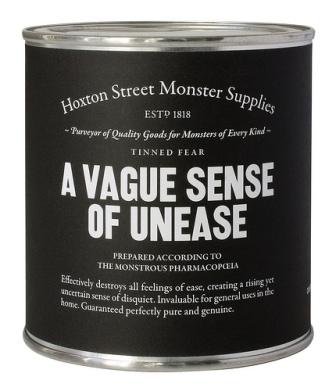 Jeopardy is a sense of instability – and a powerful way to hook the reader.
Jeopardy is a sense of instability – and a powerful way to hook the reader.
Often, writers are gearing up to reveal a big threat in the meat of the story, but fail to give us enough in the early chapters. Instead they show the characters living their lives, surrounded by their important folk. They may show us back story, and what the characters don’t want to lose. This is all useful groundwork – but they are in a state of stability.
What’s missing is the sense that the character is venturing onto a tightrope. The unknown knocking at the door. The trampoline on the balcony.
Genre and generalisations
How obvious you make this instability depends on your readership. Children’s and YA novels have to be pretty literal, while literary novels for adults might create pressures of agonising subtlety. Passages that would be aimless cogitation in a thriller might be enthralling dissonance in another genre.
But whatever you are writing, you still need jeopardy. So if your characters are looking too comfortable, what can you do?
Cut the throat-clearing
The simplest answer is to ditch the throat-clearing and get to the main threat sooner, then generate some complications to spin out afterwards.
Foreshadow with mysterious symptoms
But you might be better to keep your main conflict where it is. In that case, you need a build-up – but one that isn’t aimless.
Start from your main conflict and spin it out backwards, creating less severe problems that will lead to the flashpoint. Like mysterious symptoms that warn of a medical catastrophe, these can give that tingling sense that the character’s world is becoming irretrievably unstable.
Is there any normal activity that they start to find more difficult? Is there a tricky choice they might have to make early on? And could the character handle these in a way that makes everything more precarious? Could they think they’ve sorted it out but find they’ve made it worse?
Sometimes writers try to add jeopardy with a deadline. The gangsters are coming. Or the bomb will detonate. That can be effective if introduced late, but plot timebombs have a short shelf life. If you start them ticking too early and never escalate the problems in another way, the reader can get numbed.
Other characters
Other characters are a terrific source of instability. Is there something your main character has to do that puts them at odds with other people who are important to them?
When I fixed Life Form 3, I looked closely at the other characters. I found:
- relationships where there was tension, and I made more of it
- ways for characters to spoil things for each other
- a way to give an early warning of the main threat, by making a diluted version afflict another character
I also looked for where this new, more desperate situation might lead to alliances. This gave one character a much stronger role, and became a catalyst for other tensions that richocheted through the story. He emerged with some strong beliefs that made him a far bigger player than he was originally designed to be.
Stories need a sense of instability to tweak the reader’s curiosity. If you need to add more, you can often find the roots in your main conflict and characters.
Thanks for the canned unease pic Ministryofstories.
Have you had to add jeopardy to a story – and how did you do it? Let’s talk in the comments!
If you found this post useful, you might like the follow-up to my book Nail Your Novel. It’s currently in edits and I’m still debating the title, but it will be stuffed with craft advice. If you’d like updates about this and Life Form 3, sign up to my newsletter

